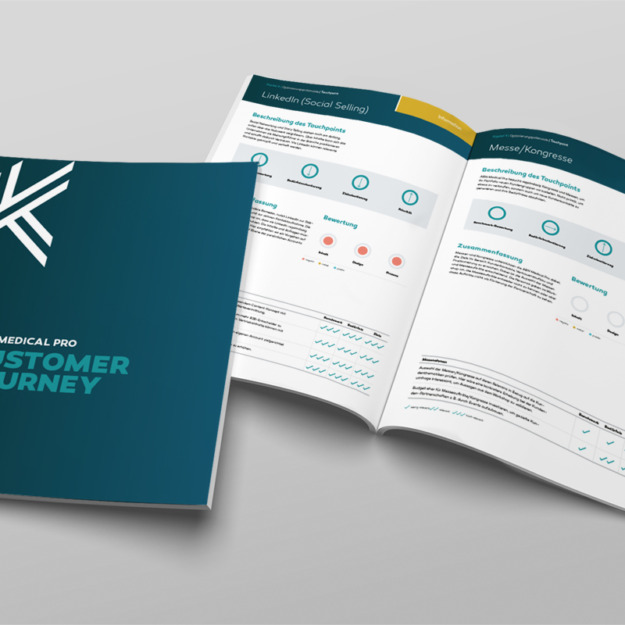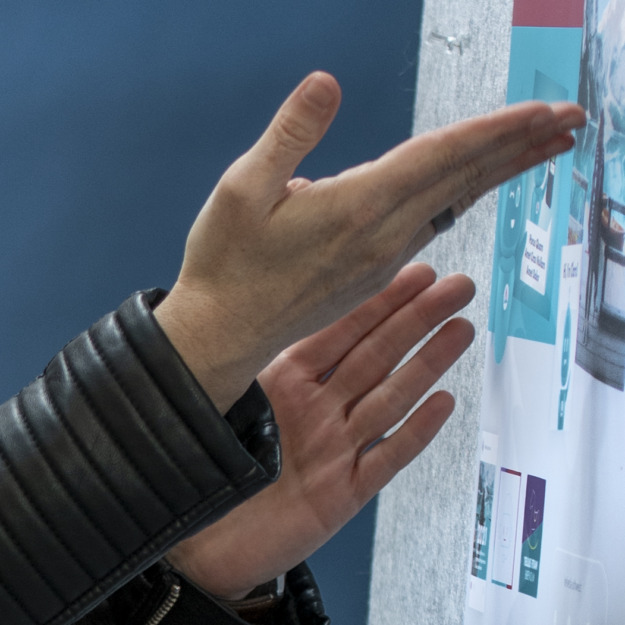Customer orientation is the focus when a company decides to work together with Faktor K. Has it really become more important?
Today, we expect added value from the companies we are loyal to. A company can only offer this added value if it understands its clientele. And that’s why this has become so important. Companies today have to ask themselves: How do we make our customers stay loyal to us?
Why does the question of what moves customers, how we can build understanding, need to be addressed so systematically? Wouldn’t it just be human to ask these questions?
In private, we would always be interested in what moves our counterpart. At least that’s how it should be. The company often lacks the time for this. Too many other issues seem to be in the foreground and unfortunately it is forgotten to include the clientele in decisions and discussions. I always say: The customer and the client are actually our bosses. Many discussions would be unnecessary if we asked our clientele. Therefore, a systematic approach is needed so that customer understanding can also be integrated into the company structurally and culturally.
What is methodologically part of a good analysis process?
The definition of the persona analyses, i.e. which different groups of people there are, is the first step. The important thing is how we define a target group and its journey. To do this, I talk a lot with people who work in the company, primarily those who deal with customers. I also always try to bring together employees from different departments. In the first step, I discuss with them what makes the customers different and what their needs are. We shouldn’t implement personas or journeys that we only internally think fit. Therefore – and most importantly – these results need to be validated. To do this, we work with data and analyses that already exist in the company, for example from web analytics. Studies also help; and they don’t always have to be studies that cost thousands of francs.
Last, but not least, is the survey of customers and non-customers. The more quantitative we make this, the better. I’m a big fan of asking customers and potential customers what their needs are or why they make what buying decisions. That’s important because otherwise we don’t know if what we’ve put up is really true and customer-centric.
If we don’t have validated personas and customer journeys, there is room for doubt in the company. The trust in the personas decreases and the motivation to work with the personas decreases.

What is a target/actual comparison and when is a comparison advisable? At the beginning or only after the implemented target procedure?
In a target-performance comparison, we look at the results of our analyses and determine which target journey is needed for each persona in order to achieve customer satisfaction. We then compare this with the current journey. With a target/actual comparison, measures can be defined immediately that can also be implemented. Therefore, the target situation should always be clear first. We then optimize step by step, but must always ask ourselves and above all the customers whether the adjustments meet the customer promise. Analyzing and optimizing – they go hand in hand. It’s a constant process.
How can customer focus be built up internally within the company?
For example, I work with internal communication concepts to make the principle of customer focus understandable. Key figures and success stories are communicated, but so are things that didn’t work out. It is often the case that the marketing department knows what needs to be done, but we also have to convince the people on the sales floor, in production or in IT. Everyone in the company is asked: What can you do to make the customer feel better? In addition, we work with workshops in which we explain the principle and develop it together. We let employees go on the customer journey themselves and look at the company’s performance with different eyes.
Is there a recipe for success when it comes to customer journey analysis?
There are three big points that need to be considered: Mindset, Skills and Tools.
If the mindset is there, it takes the manpower but also the budget. Then come the skills and tools. It is important to understand that this is a constant process, everything can eventually change again. So, in order to always remember to ask the clientele about their needs, it requires an overriding mindset. The challenge with skills is that standards are often used. This usually does not work, because in every company there are different challenges, different goals, elements, positioning. That’s why standards usually don’t apply well. They are not operationally feasible. When it comes to tools, people often forget that it’s not just about the digital journey, but about combining it with the analog journey. I see data leaks between individual departments all the time. My first step is to use the digital data, to constantly analyze and expand it, to stay on the ball, in other words.
The tools to better understand customer behavior are there, the tools to do the surveys regularly are also there. Concrete questions are important for this. It’s not enough to ask, “Would you recommend our company to others?” I think it’s important to ask the clientele directly, for example, whether what has been changed has been noticed at all. “Does what we changed here suit you?” Customers love this kind of involvement. Because it’s all about appreciation. Whoever implements this and takes these questions and, above all, the answers seriously, is well on the way to becoming a customer-oriented company.
Do many companies shy away from the financial expense of professional persona and customer journey analyses?
I like to explain this with an example: There is a store and it ordered a pair of pants. Now there are 200 of these pants in the warehouse, because no one wanted the pants. But space must be created in the warehouse. Everything that had been thought about in terms of customer orientation is now quickly obsolete, because the pants have to go.
Of course, we have to think about the turnover from the company. But I then ask: Would this have happened at all if we had applied the personas correctly? I am convinced of it, then these pants would not have ended up in the warehouse at all.

Ready for a better customer journey?
Get to know us without obligation and talk to us about your challenges. Get started!
With a customer-focused business strategy, you prioritize the needs of your customers. You can recognize a company that values customer focus by the way it promotes a certain corporate culture. The goal is to improve customer satisfaction and build and deepen stronger relationships with customers. The first step to better respond to customers is clear personas. These help to better understand the customers.
The marketing term Customer Journey, also called Buyer’s Journey or Users Journey, defines the individual phases that a customer goes through before deciding to buy a product or service and beyond. As an optimal tool, customer journey analysis can perfectly align communication and user experience with individual touchpoints to meet the needs of your different target groups.
Personas can be located not only in marketing, but in all areas of the company.
As a company, you want to convince people. This can only be achieved if you know these people and their personal needs, goals and challenges as well as possible. With a persona definition you manage to clearly segment your target groups. A key success factor here is to precisely inquire about and validate the buying behavior and needs of the personas.



